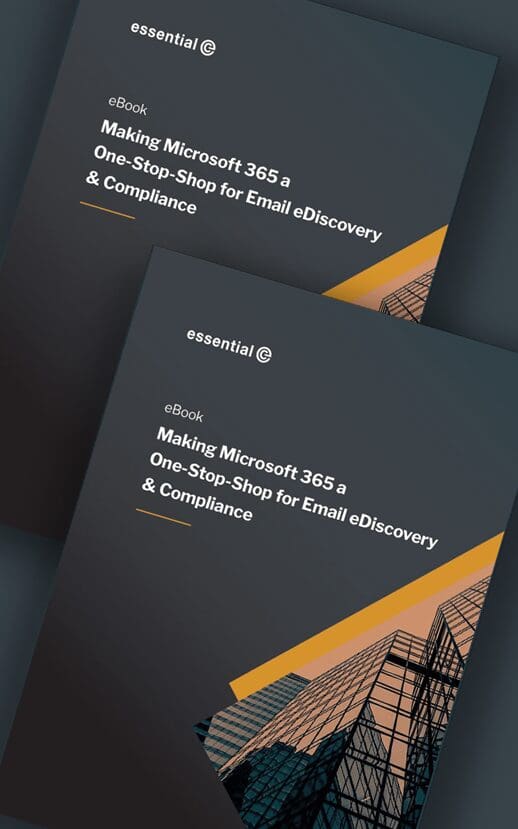Email Archive Migration
How not to manage your email archive
Whether your email archive is on-premises or in the cloud, here’s just 5 sound pieces of advice from the Essential archiving team on what IT departments should not do when managing their email records.
1. Take on the full responsibility of defining and managing retention policies
Defining email records management policy should not be solely an IT function. The setting of your email retention policy should involve the legal and records management department, HR, and other business stakeholders. Policies should be appropriate, defensible and consistently applied. The deletion of data should not be driven by ad-hoc requests that fall outside of the stated policy – even where requested by a senior member of staff. Likewise the deletion of data should not be driven by ad-hoc ‘operational’ needs (e.g. having a spring-clean before migrating to a new version of Exchange or ‘the cloud’ to minimise the amount of data to be moved). Having said this we frequently see retention policies that are devised to save costs on storage. Even if you don’t have a specific legislative or business remit to retain certain types of emails for a given time, it’s always worth ensuring that your HR/legal teams are in agreement with such policies before executing an irreversible change.
2. Err on the side of caution
In our experience many organisations either leave their retention dates ‘open ended’, or if they do set deletion dates, they don’t actually ‘press the button’ (many archiving solutions require manual confirmation by an administrator).
This is where retention policies break down, especially if the person technically responsible for administrating the archive system is not fully conversant with business and legislative retention needs and is worried about deleting something that may be needed later.
3. Have no long-term plan
Depending on your retention timelines, your archive application and the storage devices that underpin it, may get outdated and need refreshing. We see organisations replace their archives as frequently as every 5 years. The need to update must be factored into the selection process and the secure transfer of emails, including the mapping across of retention policies, to your new archive platform, should be properly executed. The deletion of defunct archives following migration should also be carefully managed, lest data that should be deleted over time still ‘hangs around’. A common problem is that often those responsible for selecting an archive have no concern for the longevity of their selection as their own career plans may involve ‘moving on’ in the short term. Similarly, the people skilled in managing an archive (and knowing where all the backups or failover copies are kept) will ‘move on’. We often see archives that have fallen into ‘disrepair’ and are no longer ‘working’. An inaccessible archive is not a compliant archive, and is a risk to the business.
4. Manage Backups Independently of Archives
Archives should be backed up, as archives in themselves are not backups. The management of archive backups should also be carefully considered. For example, even if you have a diligently executed retention (deletion) policy, emails may still exist on backups or archives, or even backups of live Exchange servers that have not been properly cycled.
5. Allow the use of PST files
Allowing the proliferation of PST files means you have archives that are outside the control of your central email retention policies. Microsoft has recently released its tool to ingest PST files and there’s a plethora of 3rd-party tools to assist with hoovering up existing PST files. As law courts become more ‘savvy’ around the capabilities of email archives and what is practical, the contents of PST files will be more routinely included in investigations.

















